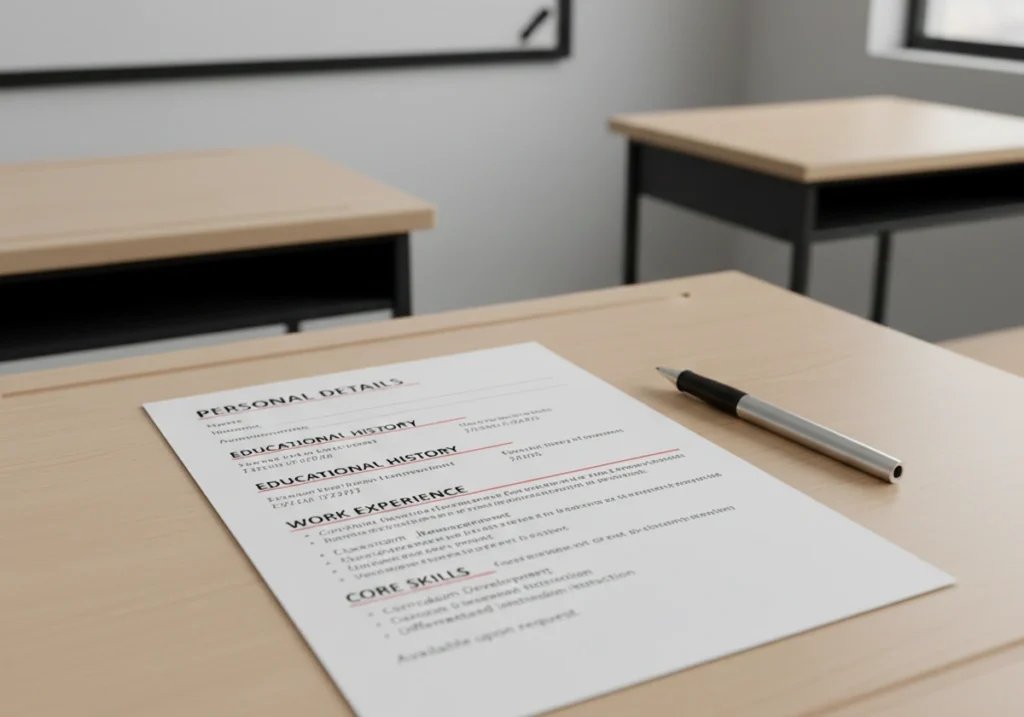How to prepare for your first teaching day in London? Start by understanding UK classroom expectations and checking the school’s behaviour policy. Then, plan which rules you’ll establish from the moment pupils walk in. Most supply teachers skip this.
Walk in unprepared and pupils will test boundaries within minutes. What’s more, you’ll spend the rest of the day fighting for control. Bear in mind, London schools follow different behaviour systems, so what worked at your last placement often won’t apply.
We’ve placed hundreds of teachers across London since 2006. Here’s what we’ll cover:
- Classroom rules and expectations in London schools
- Setting boundaries from the first lesson
- Common mistakes supply teachers make
- Finding school requirements before starting
Let’s get you properly prepared for day one.
UK Classroom Expectations: What Supply Teachers Need to Know

UK classroom expectations centre on behaviour standards, learning routines, and immediate follow-through on rules. While schools follow behaviour policies, the way your classroom runs comes down to your management. Here’s what you need to know.
Behaviour Standards in London Schools
Schools have behaviour systems in place, but teachers set the actual tone. The one-voice rule dominates everywhere: when you speak, pupils listen, and when a pupil answers, everyone else listens too.
If someone talks while you’re teaching, stop immediately. London schools expect instant follow-through on this, so say you’ll move a pupil and then do it. Empty threats wreck credibility fast.
Learning Routines You’ll Encounter
Cold calling replaces hands-up in most classrooms now. This means any pupil might answer your question, keeping everyone alert throughout the lesson.
Whiteboards and talk partners happen daily, too, where pupils discuss answers together before sharing with the class. Reading aloud also happens across subjects, usually with questions following to check understanding.
But not every London school handles these expectations the same way.
London Schools and Their Classroom Rules
A school in Tower Hamlets runs differently from one in Richmond. Location and school structure determine how classroom rules work. Here’s what drives these variations.
Borough-Specific Policies
Inner London boroughs like Tower Hamlets tend to be stricter on mobile phones. Outer areas take a softer approach.
Some boroughs prefer restorative methods, meaning you talk through behaviour rather than giving detentions. Schools near high-deprivation areas often have extra pastoral support (and trust us, forgetting this on day one stings).
Multi-Academy Trust Variations
MATs maintain identical behaviour systems across their schools. This makes moving between placements easier. Larger trusts like Harris or Ark give specific frameworks to follow. Standalone schools let you adapt rules to suit your style.
Knowing this helps, but you still need clear rules from day one.
What Classroom Rules Should You Set on Day One?

Set the one-voice rule and respect basics. Everything else can wait. The benefit is that pupils know where they stand immediately. Research shows that classroom management impacts learning, so getting this right creates a positive learning environment.
The One-Voice Rule
Only one person speaks at a time. If someone talks while you’re explaining, stop completely. Don’t push through, hoping it settles.
Pupils need to see that you won’t budge. Practice it from the entry. If they walk in chatting, send them back until everyone gets the hang of things.
Respect and Kindness Basics
Use positive language from your first greeting and learn names fast. Make it clear that unkind comments won’t fly. No eye-rolling when someone answers.
Model the respect you’re asking for. Also, listen properly to pupil responses rather than just nodding along.
Once these rules stick, lessons become easier.
Night Before Preparation for Supply Teachers
Preparing the night before means checking the school’s behaviour policy, planning your seating arrangement, and rehearsing entry routines. After placing hundreds of supply teachers across London since 2006, we’ve learned this prep separates smooth days from chaotic ones.
Start with the school’s website to find their behaviour policy. Most London schools publish these online. Prepare a seating plan template next because you’ll need names within ten minutes. Think through your entry routine: how pupils enter, where they sit, and what they do during registration.
Walk through these steps mentally so everything feels familiar when they arrive.
Common Mistakes: Classroom Expectations in UK Schools
Most supply teachers assume they can use the same approach from their last school, but that’s when things go sideways. Let’s be real: what worked before rarely fits elsewhere. Schools follow Teachers’ Standards, but interpret expectations differently.
Assuming All Schools Operate Identically
Every behaviour system runs differently, so what worked before might not apply. We suggest you state your expectations clearly and ask the class teacher about unwritten rules. You won’t learn the ropes any other way.
Being Too Relaxed Initially
Friendly doesn’t mean soft, and pupils test boundaries within five minutes (we’ve watched this more times than we’d like to admit). You can relax rules later, but tightening up after being lenient is impossible. One ignored warning undermines everything.
Getting these right makes your week much smoother.
Where Can You Find School-Specific Classroom Expectations?

School-specific expectations come from three places: behaviour policies, staff handbooks, and conversations with teachers. Supply teachers who ask early have smoother first days.
Most schools email their behaviour policy the day before. Some hand it over on arrival. Check the staff handbook during your first break because it often includes classroom rules not mentioned elsewhere.
Use break time to chat with permanent teachers in the staff room about school-specific quirks. Your agency consultant can also provide details from previous placements at that school.
Now that you know where to find everything, let’s wrap this up.
Your First Day Checklist
Your first teaching day goes smoothly when you nail three things: understanding classroom expectations, checking the behaviour policy early, and setting clear rules immediately. Review the school’s requirements the night before. Plan your seating arrangement. Think through how pupils will enter.
OTJR has worked with London schools since 2006, placing hundreds of supply teachers across the city. We give you school-specific briefings before each placement so you know what to expect when you arrive. We also match teachers with roles that suit their experience and teaching style.
Looking for supply teaching jobs in London? Join our registered team and let’s discuss opportunities that move your teaching career forward.






































